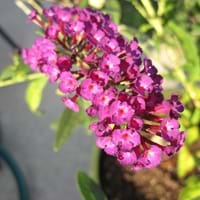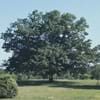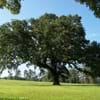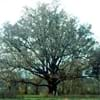Life Span
Perennial
Perennial
Type
Tree
Flowering Plants, Shrubs
Origin
Western United States, California, Canada, China
Africa, America, Asia
Types
Balsam Fir, Cannan Fir, Fraser Fir, Grand Fir
Lockinch, Petite Indigo, White Profusion
Number of Varieties
Not Available
Habitat
Moist Soils, Rocky areas
Along Railroads, River side, Roadsides
USDA Hardiness Zone
4-7
5-10
Sunset Zone
A2, A3, 1a, 1b, 2a, 2b, 3a, 3b, 4, 5, 6, 7, 9, 10, 14, 15, 16, 17
H1, 2a, 2b, 3a, 3b, 4, 5, 6, 7, 8, 9, 10, 11, 12, 13, 14, 15, 16, 17, 18, 19, 20, 21, 22, 23, 24
Habit
Upright/Erect
Arching/Fountain-shaped
Flower Color
Not Available
Blue, Pink, Purple, Red, White
Flower Color Modifier
Bicolor
Not Available
Fruit Color
Sandy Brown
Not Available
Leaf Color in Spring
Dark Green
Gray Green
Leaf Color in Summer
Dark Green
Gray Green, Light Green
Leaf Color in Fall
Dark Green
Gray Green, Light Green, Yellow green
Leaf Color in Winter
Dark Green
Not Available
Leaf Shape
Needle like
Egg-shaped
Plant Season
Spring, Summer, Fall, Winter
Fall, Spring, Summer, Winter
Sunlight
Full Sun
Full Sun, Part sun, Partial shade
Type of Soil
Clay, Loam
Loamy, Sandy, Well drained
The pH of Soil
Acidic, Neutral
Neutral, Slightly Acidic, Slightly Alkaline
Soil Drainage
Well drained
Well drained
Bloom Time
Not Available
Spring
Tolerances
Shade areas
Drought, Pollution, Salt, Soil Compaction
Where to Plant?
Ground
Ground, Pot
How to Plant?
Seedlings, Stem Planting, Transplanting
Seedlings, Stem Planting, Transplanting
Plant Maintenance
Low
Medium
Watering Requirements
Keep the ground moist but not water-logged, Requires consistently moist soil
Form a Soil ring to water efficiently, Water Deeply, Water twice a day in the initial period
In Summer
Lots of watering
Lots of watering
In Spring
Moderate
Moderate
In Winter
Average Water
Average Water
Soil pH
Acidic, Neutral
Neutral, Slightly Acidic, Slightly Alkaline
Soil Type
Clay, Loam
Loamy, Sandy, Well drained
Soil Drainage Capacity
Well drained
Well drained
Sun Exposure
Full Sun
Full Sun, Part sun, Partial shade
Pruning
No need to prune, No pruning needed
Cut or pinch the stems, Prune for shortening long shoots, Prune if you want to improve plant shape, Prune ocassionally, Remove damaged leaves, Remove dead or diseased plant parts, Remove deadheads, Remove shoots
Fertilizers
All-Purpose Liquid Fertilizer, fertilize every 2-3 weeks while growing
All-Purpose Liquid Fertilizer
Pests and Diseases
Beetles, Borers, Red blotch
Downy mildew, Leaf spot, Spider mites
Plant Tolerance
Drought
Drought
Flower Petal Number
Not Available
Single
Foliage Texture
Fine
Medium
Foliage Sheen
Matte
Matte
Attracts
Insects
Butterflies, Hummingbirds
Allergy
Skin rash
Vomiting
Aesthetic Uses
Beautification, Landscape Designing, Showy Purposes, Used as Christmas tree
Showy Purposes
Beauty Benefits
Not Available
Not Available
Environmental Uses
Air purification, Nesting sites for birds
Air purification
Medicinal Uses
Burns, Cough, Sore throat, Stomach pain, Wounds
Not Available
Part of Plant Used
Whole plant
Flowers, Leaves
Other Uses
Decoration Purposes, Economic Purpose, Oil is used for aromatherapy, Showy Purposes, Used As Food, Used for its medicinal properties, Used in biomass, Used in paper industry, Wood is used for making furniture, Wood is used for ship building, Wood is used in construction, Wood log is used in making fences
Showy Purposes, Used as Ornamental plant
Used As Indoor Plant
Yes
No
Used As Outdoor Plant
Yes
Yes
Garden Design
Alpine, Feature Plant, Foundation, Screening / Wind Break, Shade Trees
Edging, Feature Plant, Foundation
Botanical Name
PSEUDOTSUGA menziesii
Buddleia davidii
Common Name
Douglas Fir
Butterfly Bush, Summer Lilac, Butterflybush
In Hindi
डगलस फ़िर
Butterfly Bush
In German
Douglasfichte
Schmetterlingsstrauch
In French
le sapin de Douglas
buisson de papillon
In Spanish
abeto Douglas
arbusto de las mariposas
In Greek
έλατο Douglas
Butterfly Μπους
In Portuguese
Douglas Fir
arbusto de borboleta
In Polish
daglezji
Butterfly Bush
In Latin
Douglas abies
papilio rubo
Phylum
Tracheophyta
Spermatophyta
Class
Pinopsida
Dicotyledonae
Family
Pinaceae
Scrophulariaceae
Genus
Pseudotsuga
Buddleja
Clade
Not Available
Angiosperms, Asterids, Eudicots
Tribe
Not Available
Not Available
Subfamily
Not Available
Not Available
Number of Species
Not Available
Season and Care of Douglas Fir and Butterfly Bush
Season and care of Douglas Fir and Butterfly Bush is important to know. While considering everything about Douglas Fir and Butterfly Bush Care, growing season is an essential factor. Douglas Fir season is Spring, Summer, Fall and Winter and Butterfly Bush season is Spring, Summer, Fall and Winter. The type of soil for Douglas Fir is Clay, Loam and for Butterfly Bush is Loamy, Sandy, Well drained while the PH of soil for Douglas Fir is Acidic, Neutral and for Butterfly Bush is Neutral, Slightly Acidic, Slightly Alkaline.
Douglas Fir and Butterfly Bush Physical Information
Douglas Fir and Butterfly Bush physical information is very important for comparison. Douglas Fir height is 2,440.00 cm and width 610.00 cm whereas Butterfly Bush height is 7.50 cm and width 4.00 cm. The color specification of Douglas Fir and Butterfly Bush are as follows:
Douglas Fir flower color: Not Available
Douglas Fir leaf color: Dark Green
Butterfly Bush flower color: Blue, Pink, Purple, Red and White
- Butterfly Bush leaf color: Gray Green
Care of Douglas Fir and Butterfly Bush
Care of Douglas Fir and Butterfly Bush include pruning, fertilizers, watering etc. Douglas Fir pruning is done No need to prune and No pruning needed and Butterfly Bush pruning is done Cut or pinch the stems, Prune for shortening long shoots, Prune if you want to improve plant shape, Prune ocassionally, Remove damaged leaves, Remove dead or diseased plant parts, Remove deadheads and Remove shoots. In summer Douglas Fir needs Lots of watering and in winter, it needs Average Water. Whereas, in summer Butterfly Bush needs Lots of watering and in winter, it needs Average Water.





